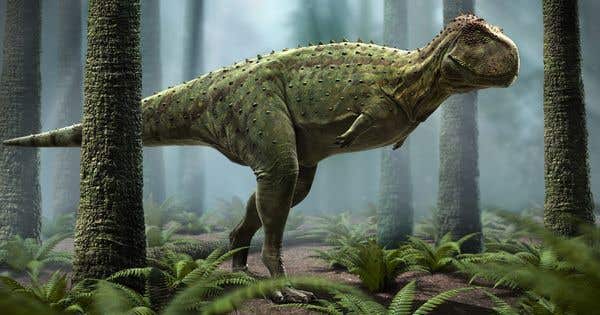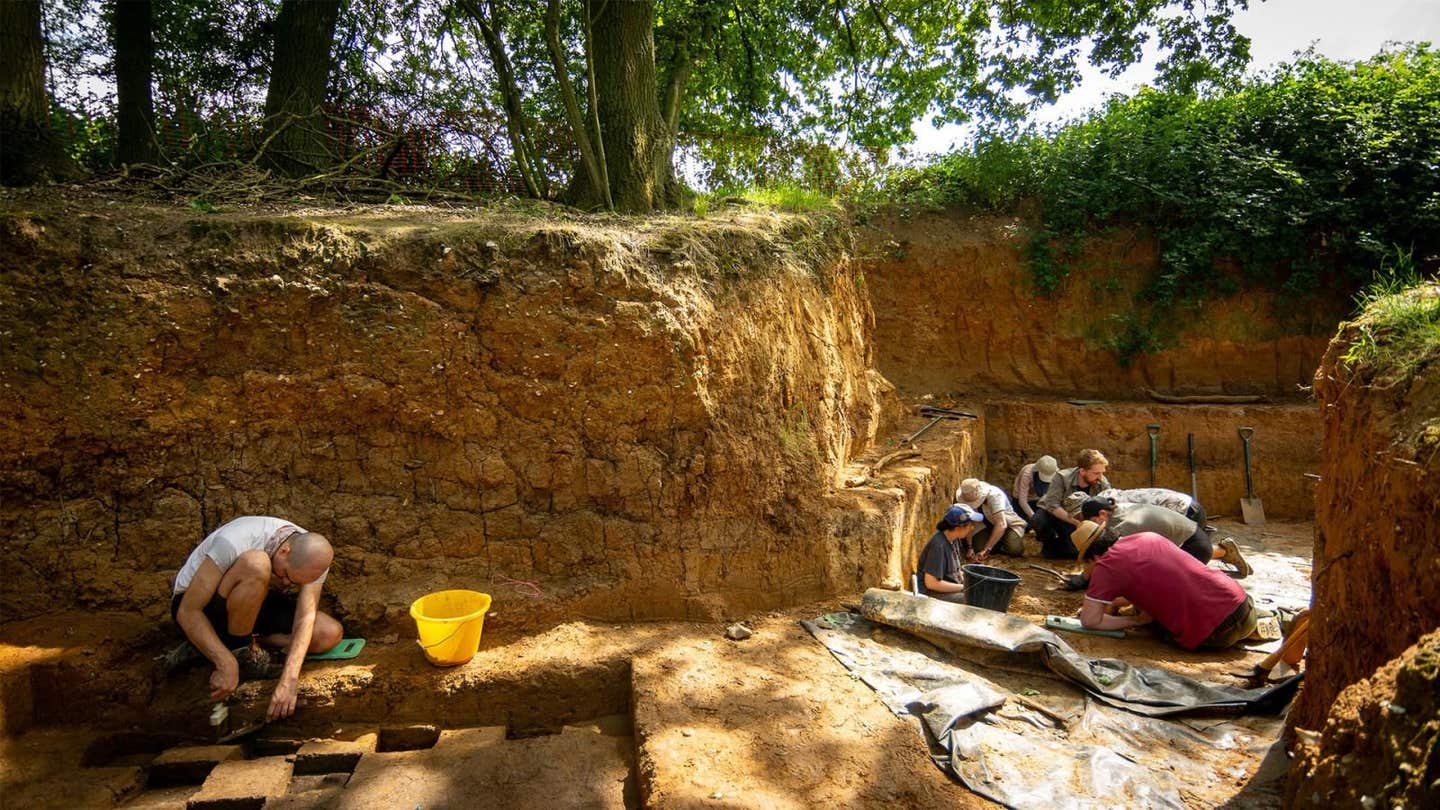Researchers discover “primitive cousin” of T rex
In the vast, sandy plains outside Casablanca, Morocco, a significant discovery has been unearthed — fossils of ancient ancestors of T. rex

[Aug. 24, 2023: Staff Writer, The Brighter Side of News]
Abelisaurs, bearing short, robust snouts and even shorter arms, trace their ancestry back to the ancestors of the fearsome T. rex. (CREDIT: Creative Commons)
In the vast, sandy plains outside Casablanca, Morocco, a significant discovery has been unearthed — fossils of ancient dinosaurs, not quite like any other. These creatures, bearing short, robust snouts and even shorter arms, trace their ancestry back to the ancestors of the fearsome T. rex.
Their discovery is reshaping our understanding of dinosaur diversity in Africa right before their catastrophic demise 66 million years ago.
The late Cretaceous period is pivotal in understanding the world of dinosaurs. It marked their final chapter before a giant asteroid wiped them from the face of the Earth. It's in this significant era that two new dinosaur species have been discovered in Morocco, a mere stone's throw away from the bustling city of Casablanca.
Near the town of Sidi Daoui, palaeontologists unearthed a foot bone representing a predator approximately two and a half metres (eight feet) in length. Meanwhile, a short journey away at Sidi Chennane brought the discovery of the shin bone of a carnivorous behemoth that measured around five metres (15 feet) in length.
Related Stories
Both of these specimens belong to the Abelisauridae family — carnivorous dinosaurs that once roamed Africa and served as the Southern Hemisphere's counterpart to the mighty tyrannosaurs of the Northern Hemisphere.
Rich Marine Beds: An Unexpected Hotspot
Led by Dr. Nick Longrich from the Milner Centre for Evolution at the University of Bath, the study unveiled the unusual environment these dinosaurs inhabited. He remarked, “What’s surprising here is that these are marine beds. It’s a shallow, tropical sea teeming with plesiosaurs, mosasaurs, and sharks. It's not your textbook habitat for dinosaurs, but here they are.”
The abundance of fossils in this region has rendered it a goldmine for insights into the African dinosaurs from the twilight of their age. Instead of repetitive findings of the same species, the beds seem to constantly surprise with fossils from new, previously unknown species.
Fossils have been found of several types of abelisaur showing the diversity of dinosaurs in Morocco at the end of the Cretaceous period. (CREDIT: Andrey Atuchin)
Dr. Longrich elucidates: “We have other fossils as well, but they're currently under study. All I can reveal now is that this was an astoundingly diverse dinosaur fauna.”
Among the species identified, there's the small duckbill dinosaur named Ajnabia, a statuesque long-necked titanosaur, the gigantic abelisaur Chenanisaurus, and now, these two novel abelisaurs.
Debating the Decline: Africa's Dinosaurs Thrived
The last dinosaurs disappeared around 66 million years ago, a catastrophic event that took with it nearly 90% of all species, including the enigmatic mosasaurs, plesiosaurs, pterosaurs, and ammonites. Scholars and palaeontologists have grappled with the causes of this extinction event for centuries.
Fossil abelisaur tibia. (CREDIT: University of Bath)
An asteroid's colossal impact on the Yucatan peninsula is one prominent theory. Some argue that dinosaurs were already on a downward spiral even before this cataclysmic event. Yet, the discoveries in Morocco provide compelling evidence that, at least in North Africa, these majestic creatures thrived until the very end.
Dr. Longrich added nuance to this debate: “It's true that the end of the Cretaceous in western North America seems to showcase reduced diversity. But that's just one small part of the world. Generalising from the dinosaurs of Wyoming and Montana to the entire globe is quite the leap.”
Fossil abelisaur metatarsal. (CREDIT: Nick Longrich, University of Bath)
Nour-Eddine Jalil, a professor and co-author from the Natural History Museum, drew parallels between the two continents: "While T. rex ruled as the supreme predator in North America, abelisaurs were the kings of the food chains in North Africa."
A Symphony of Biodiversity
The message emanating from these fossil discoveries is clear and in harmony with the more abundant marine reptile findings. Contrary to some previous beliefs, biodiversity was not on the decline, but instead flourishing in the shadows of the impending Cretaceous-Paleogene crisis.
This groundbreaking study, brought to light by Dr. Nick Longrich, Prof. Xabier Pereda-Suberbiola, Erik Isasmendi, and Nour-Eddine Jalil, is now available in the renowned journal 'Cretaceous Research', adding another fascinating chapter to the complex history of our planet's past.
Note: Materials provided above by The Brighter Side of News. Content may be edited for style and length.
Like these kind of feel good stories? Get the Brighter Side of News' newsletter.



